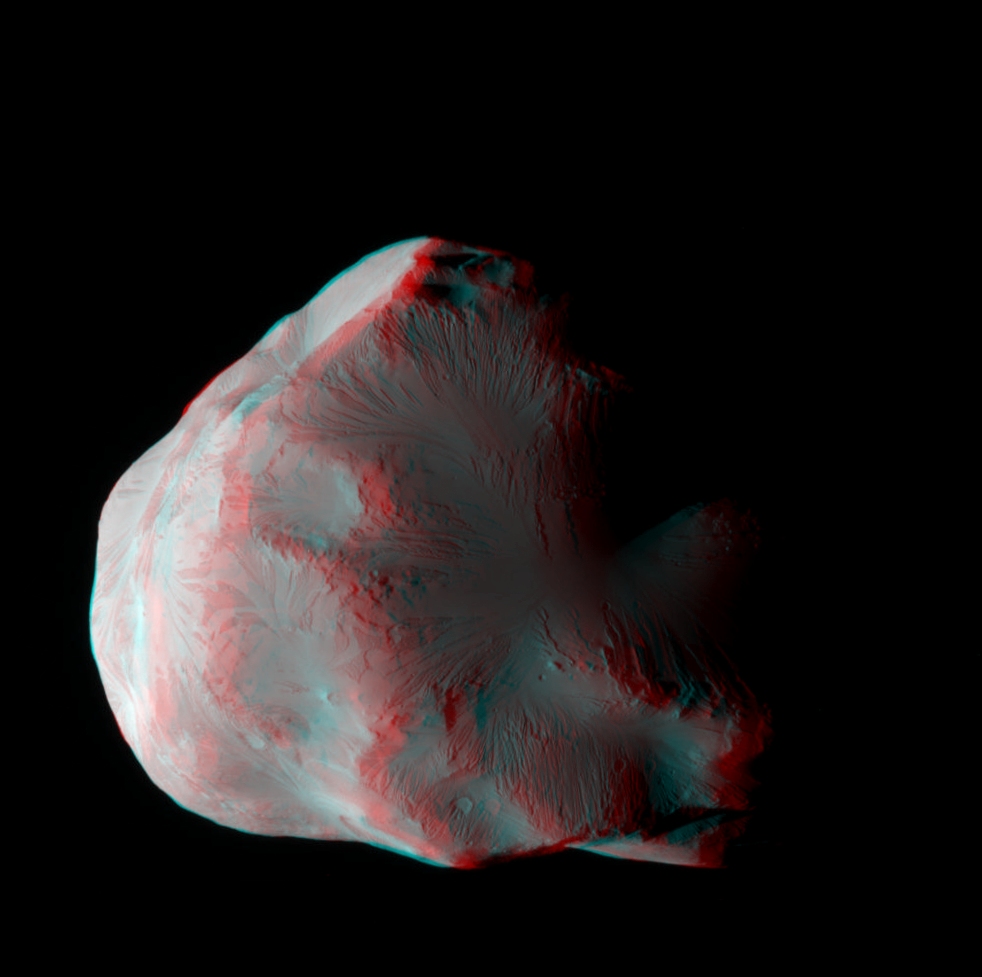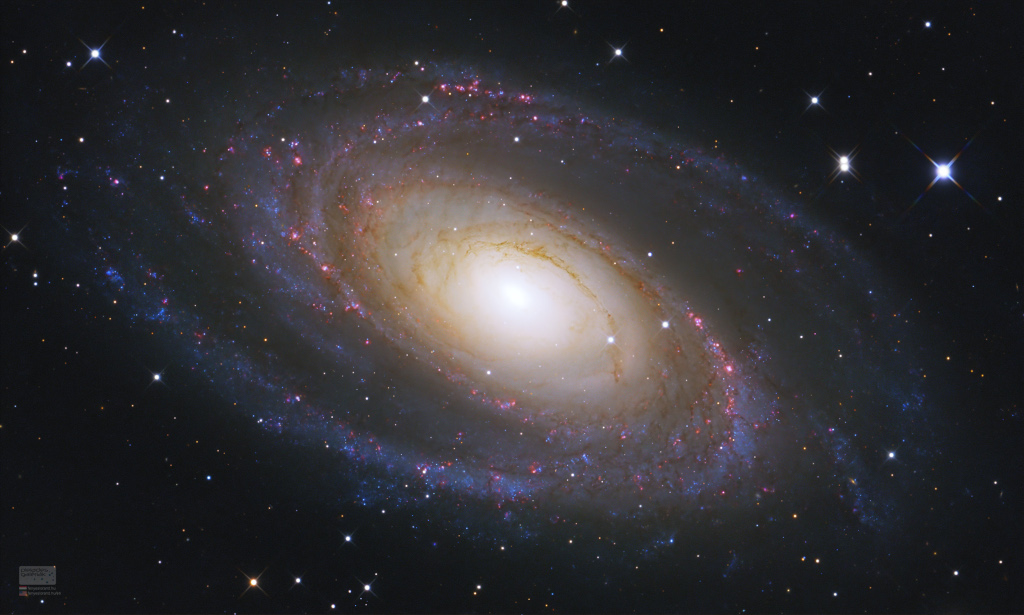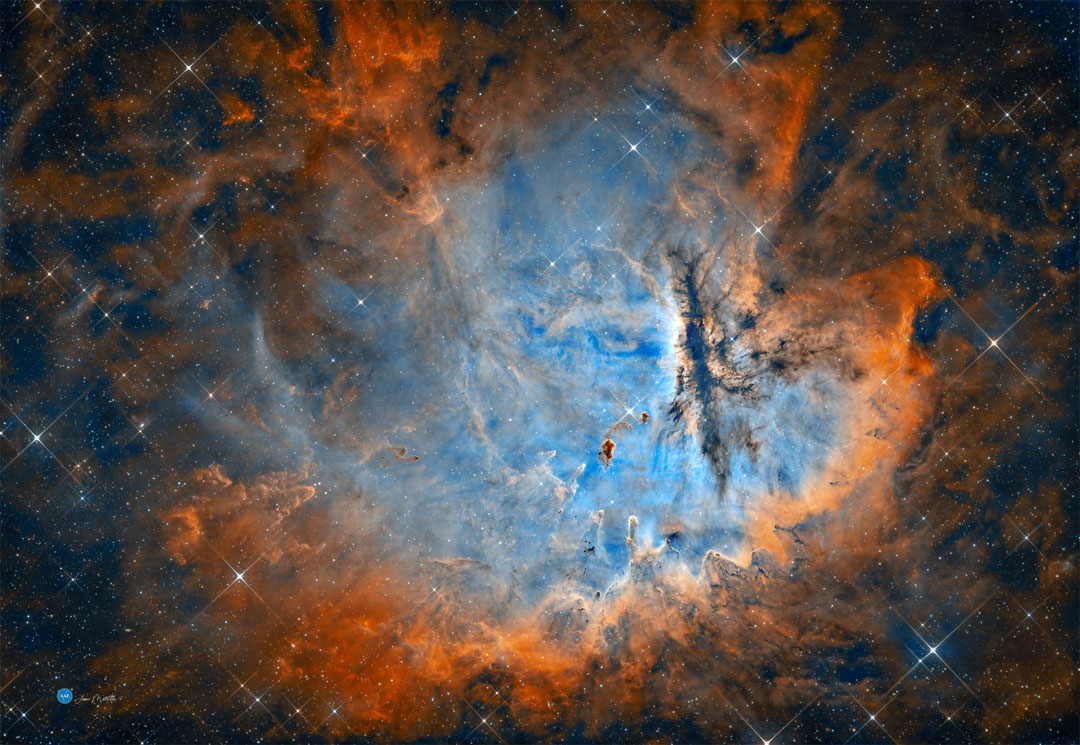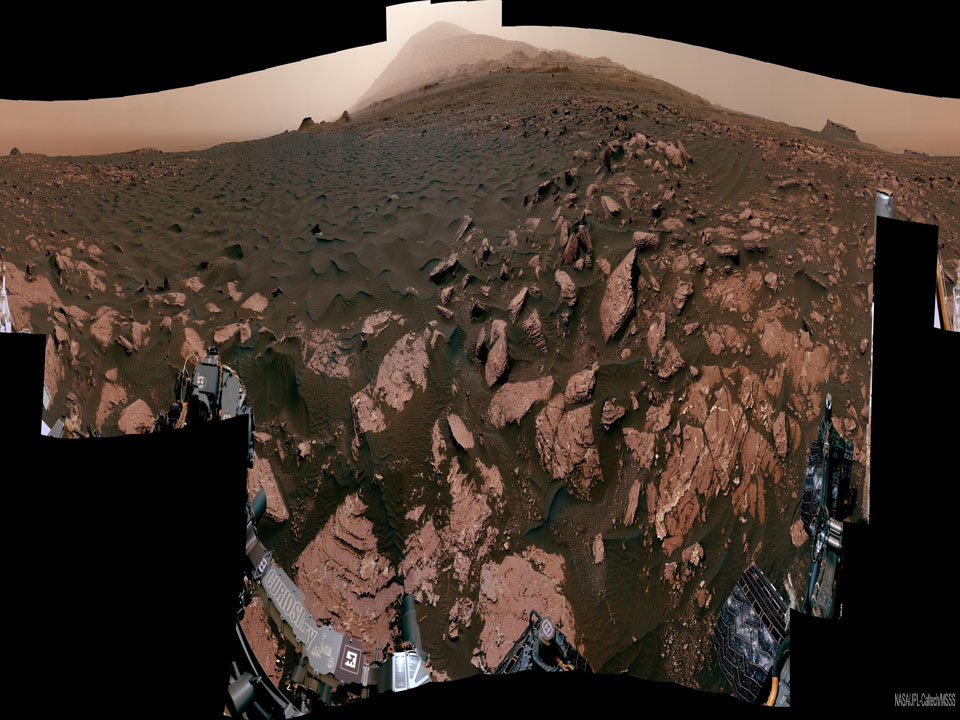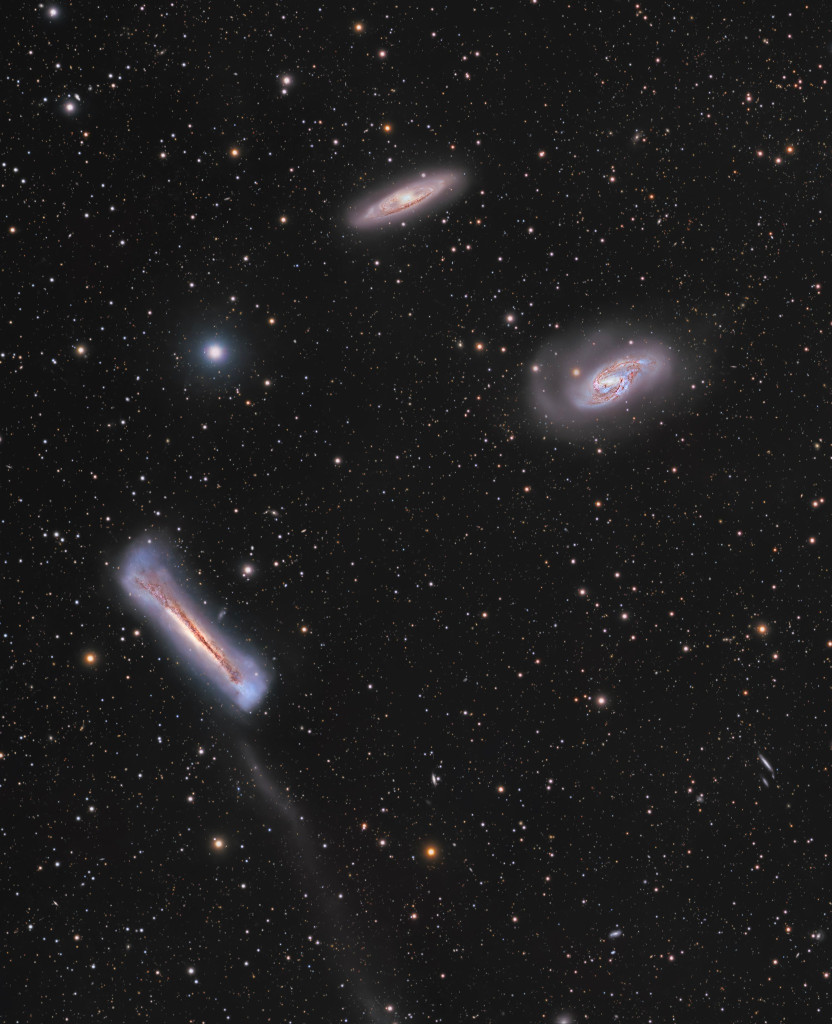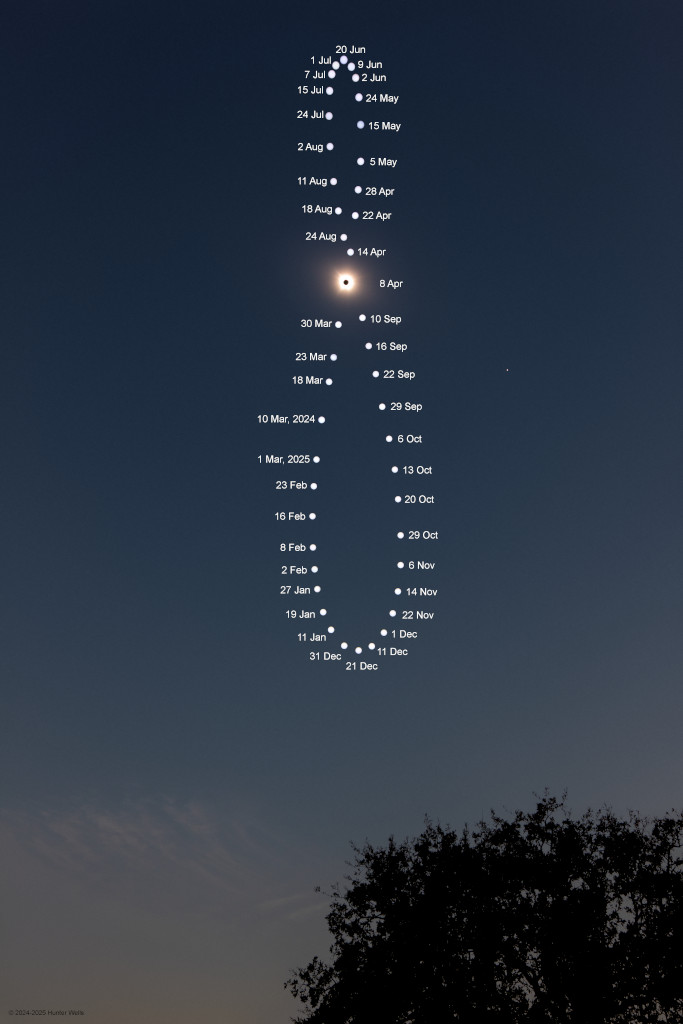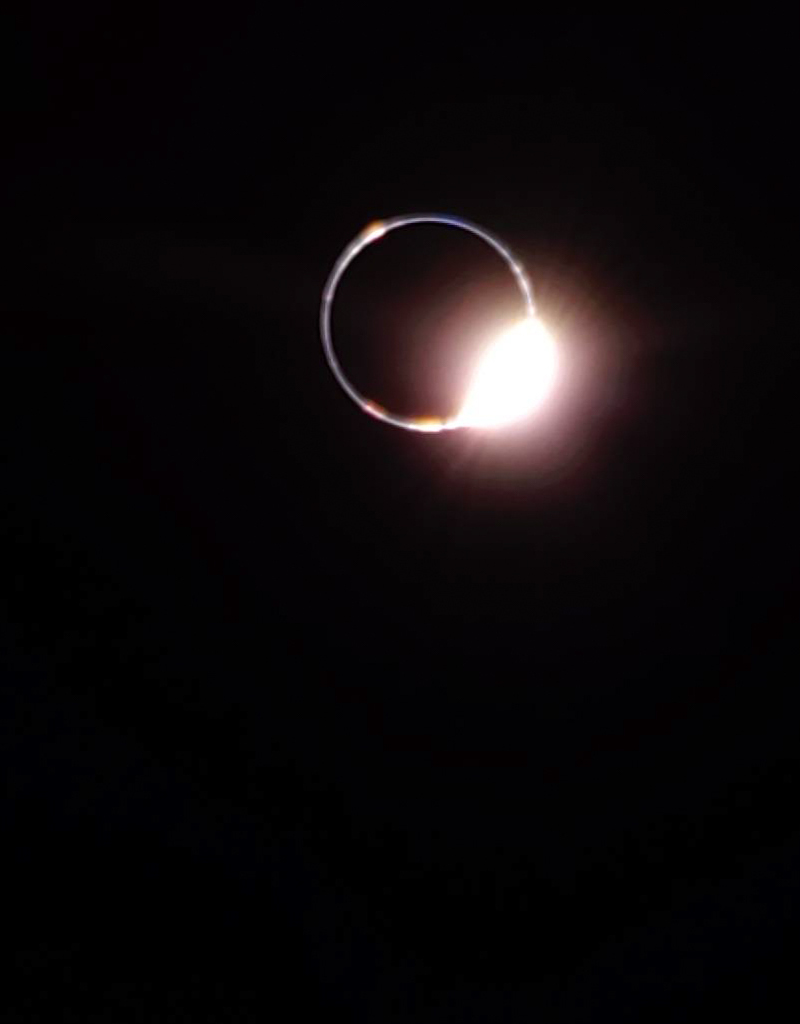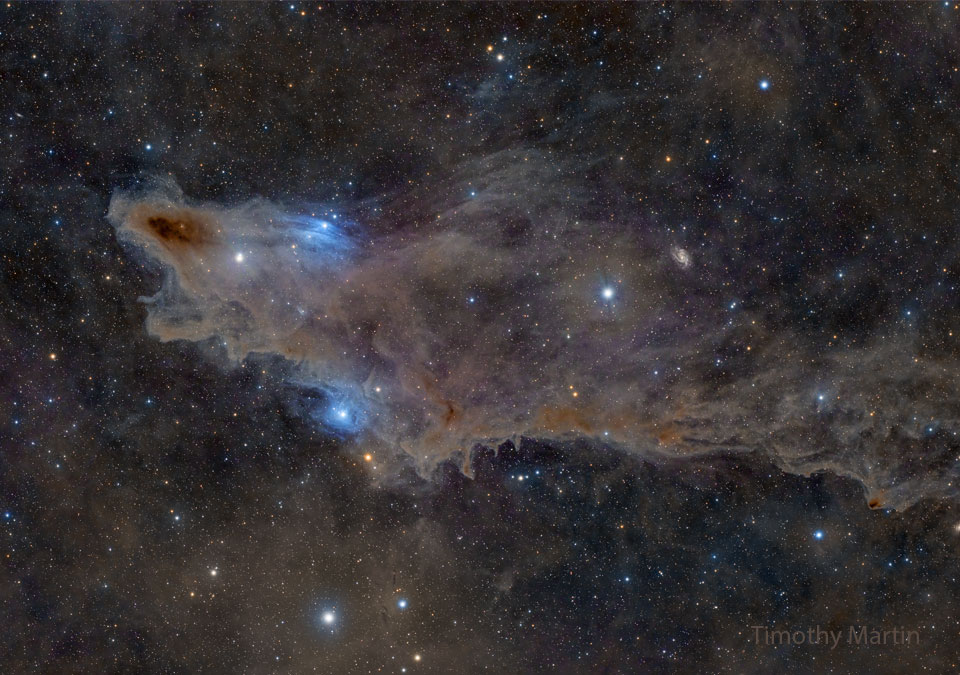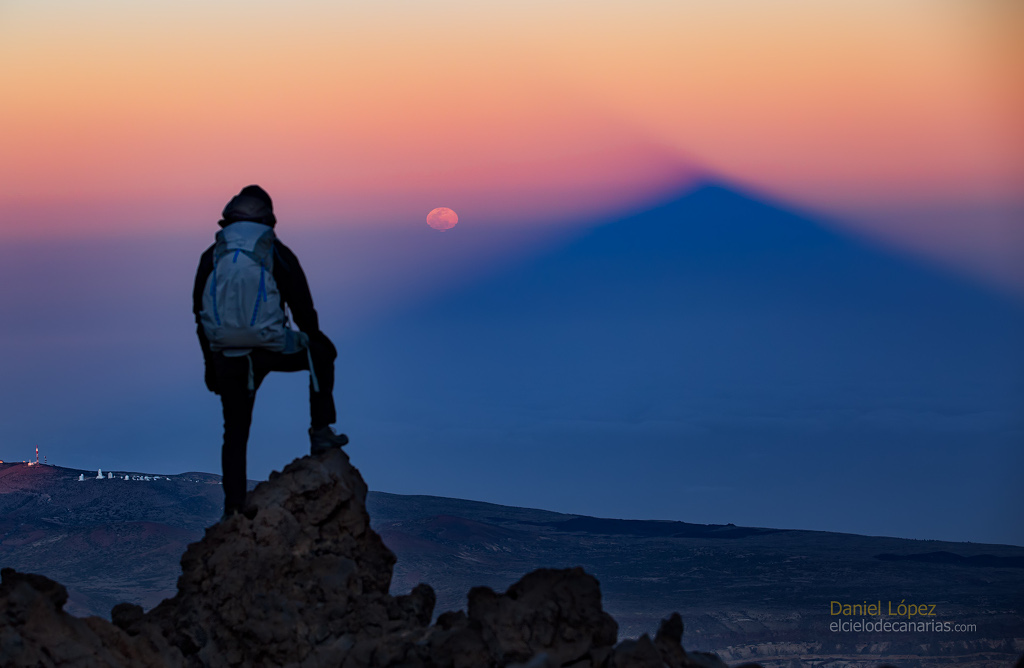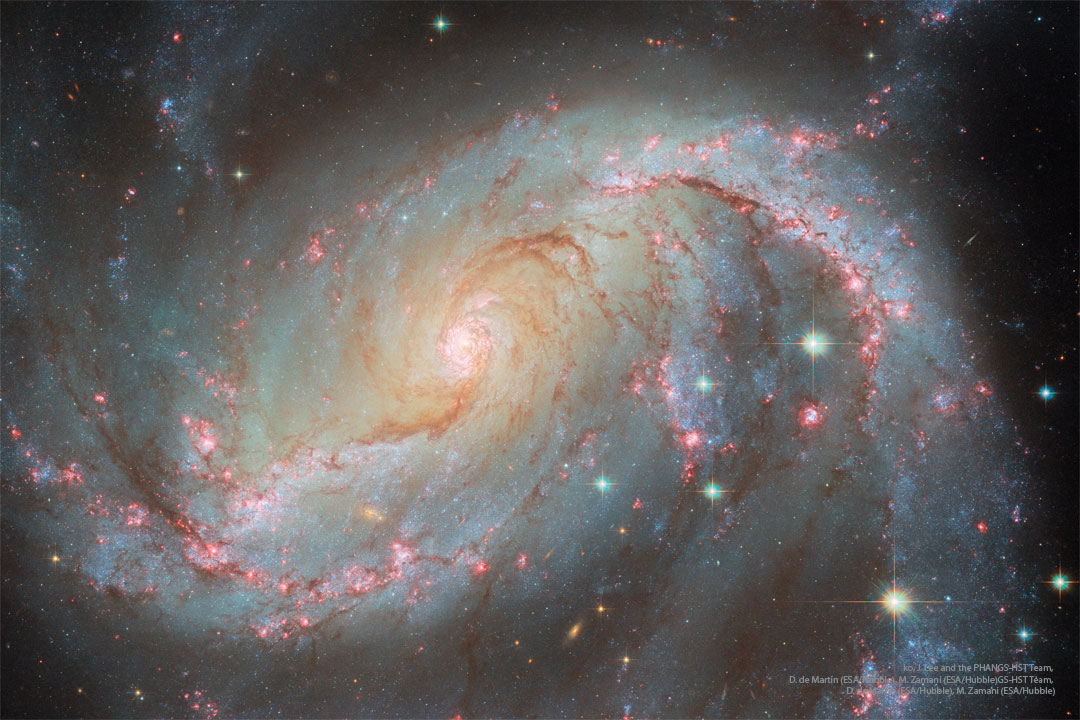Astronomy Picture of the Day
Discover the cosmos! Each day a different image or photograph of our fascinating universe is featured, along with a brief explanation written by a professional astronomer.
Image Credit & Copyright: Wioleta Gorecka
Explanation: What if the Sun and Moon rose together? That happened yesterday over some northern parts of planet Earth as a partial solar eclipse occurred shortly after sunrise. Regions that experienced the Moon blocking part of the Sun included northeastern parts of North America and northwestern parts of Europe, Asia, and Africa. The featured image was captured yesterday over the Grábrók volcanic crater in Iceland where much of the Sun became momentarily hidden behind the Moon. The image was taken through a cloudy sky but so well planned that the photographer's friend appeared to be pulling the Sun out from behind the Moon. No part of the Earth experienced a total solar eclipse this time. In the distant past, some of humanity was so surprised when an eclipse occurred that ongoing battles suddenly stopped. Today, eclipses are not a surprise and are predicted with an accuracy of seconds.
Tomorrow's picture: inside out solar system
Authors & editors: Robert Nemiroff (MTU) & Jerry Bonnell (UMCP)
NASA Official: Amber Straughn Specific rights apply.
NASA Web Privacy, Accessibility, Notices;
A service of: ASD at NASA / GSFC,
NASA Science Activation
& Michigan Tech. U.
This is an automated email. If you notice any problems, just send me a note at gtracy@gmail.com. You can add and remove email addresses to this distribution list here, https://apodemail.org.Unsubscribe

